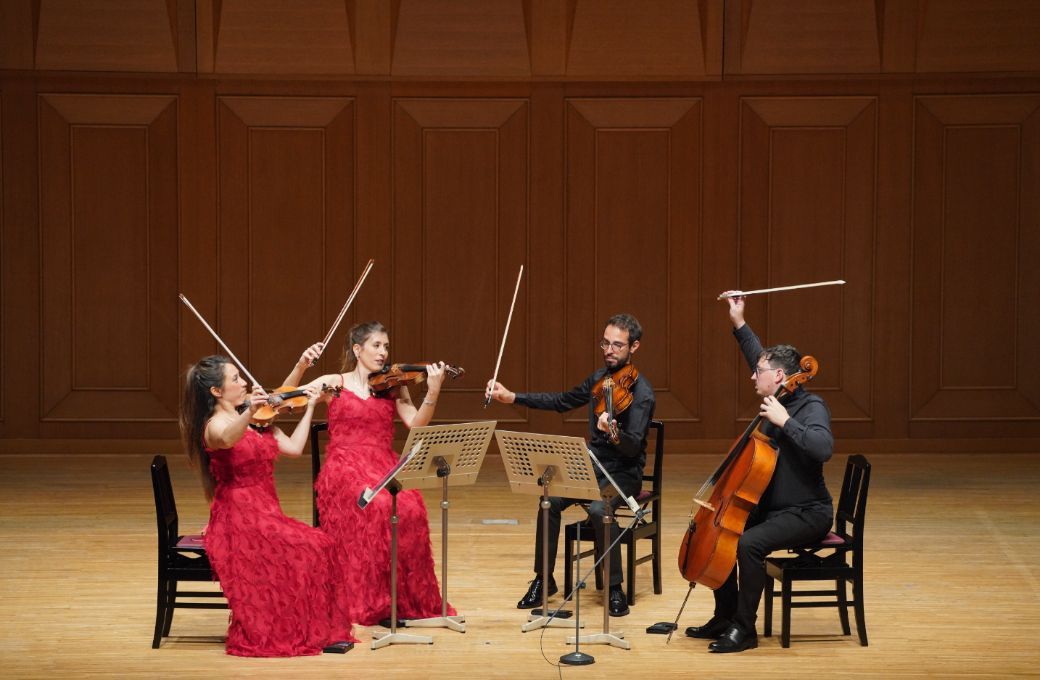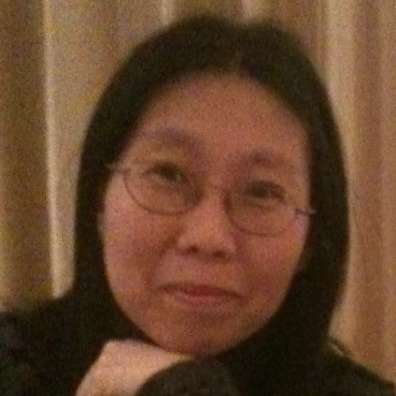Every three years, string quartets from all over the world gather in Osaka’s beautiful Izumi Hall, a stone’s throw from Osaka Castle. The string quartet section forms the backbone of the Osaka International Chamber Music Competition, which also has a section for piano trio/quartet and a separate free-style Festa category. The competition has launched the careers of groups such as the Belcea and Doric quartets in its 30 year history; this year, ten groups from six countries were invited to Osaka out of 29 applicants. After three rounds covering core quartet repertoire from Beethoven to contemporary, including a new work by Misato Mochizuki, three groups made it to the final round.
What struck me most listening to the final round was how contrasting the playing styles of the groups were: differences in the sonorities, different dynamics between the four players, and even different seating arrangements. True, the quartets were all from different continents and different backgrounds: Hono Quartet from Japan, Terra String Quartet from the USA, and Quartetto Indaco from Italy. But when you listen to three quartets in succession, you realise that the art of string quartet playing can be approached in so many ways. All three quartets achieved an extremely high level of technical finesse, interpretative depth, and balance; for me, ultimately, the result boiled down to how the four musicians interacted and communicated the music to the audience.
Hono Quartet, consisting of four Japanese musicians who studied at Tokyo Geidai, kicked off with Beethoven’s string quartet Op.127, the first of his late quartets. Overall, it was the first violinist Honoka Kishimoto who played the leading role in the group, and she constantly inspired the group’s detailed and subtle exploration of this abstract and timeless work. The first movement opened boldly and emphatically and the quartet maintained a focused and unified sonority throughout. In the sublime slow movement, there was nobility in their playing, especially in Kishimoto’s lyrical solo that reminded one of the Benedictus in Beethoven’s Missa Solemnis, composed around the same time. Meanwhile, there was plenty of liveliness and character in the finale with the captivating extended coda. The only reservation I had was that their playing was perhaps at times too inwardly focused; a little more projection of sonority and character would have given a stronger overall impression.
In that sense, the Terra String Quartet from USA, semifinalists at the recent Banff competition, represented the outgoing type rather than the inward-looking type, giving us a big-gestured performance of Beethoven’s Op.132 quartet. Each plays in a soloistic and exuberant style, but their sounds blend into a rich and mellow sonority. Op.132 is a massive five-movement work, which they navigated confidently and skilfully, creating constant dialogue with each other and at times taking expressive risks. They brought out both the rhetorical and lyrical aspects of the first movement, with well-judged tempo transitions. After a gently undulating scherzo came the famous “Heiliger Dankgesang” movement, which they carried through with poise and purity of sound (using little vibrato in the hymn-like sections), building up to the rapturous climax. Although the finale sounded a little effortful, it was a characterful performance.

The last group on stage was Quartetto Indaco from Italy, who chose to perform Schubert’s final quartet (D887). Their tightly knit interpretation of this work felt the most complete and seasoned of the three performances and above all, they breathed and sounded as one. The group was framed by the first violinist, Eleonora Matsuno, with her attractive tone and elegant phrasing, and cellist, Cosimo Carovani, who was clearly the engine of the group, always alert and providing a strong foundation. In the first two opening movements, they articulated the dramatic contrast between light and darkness, lyricism and passion, calmness and emotional outburst, often with spontaneous expressions. After a breezy Scherzo, the finale was urgent without being rushed, and I cherished every repeat of the catchy rondo theme – surely a sign of a fine Schubert performance.
After the deliberation of the jury, the first prize was awarded to Quartetto Indaco, a decision that was probably shared by the majority of the audience including myself (NB: the jury decision is based on the performances of all the rounds, not just the final). Originally founded in 2007 (with subsequent member changes), it was a moment when their commitment finally paid off. Hono Quartet was awarded second prize and the “Ambassador Ensemble of the Osaka International Chamber Music Competition” Award, and the Terra String Quartet was awarded third prize. Meanwhile, in the equally hotly contested piano trio/quartet final held earlier in the day, the multi-national group Capybara Quartet won first prize with a luminous performance of Brahms’s Piano Quartet No. 3. Do look out for these talented groups if they come to a venue near you.
Nahoko's travel to Osaka and accommodation were funded by the Osaka International Chamber Music Competition


